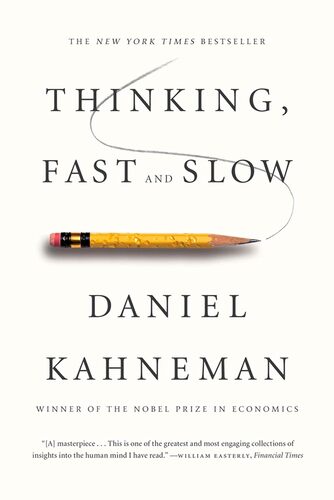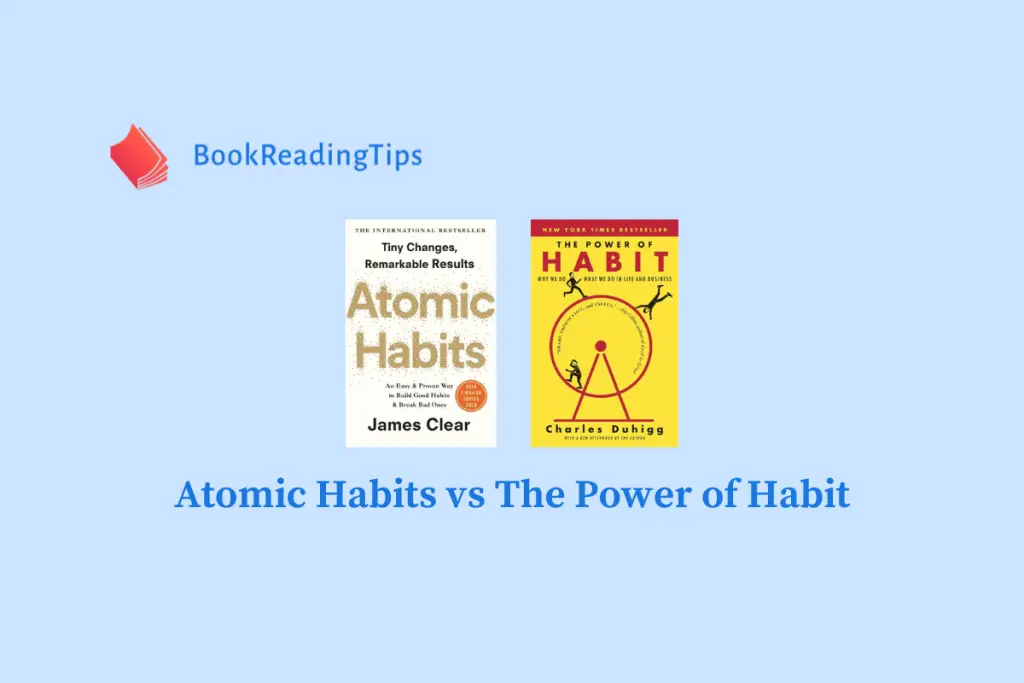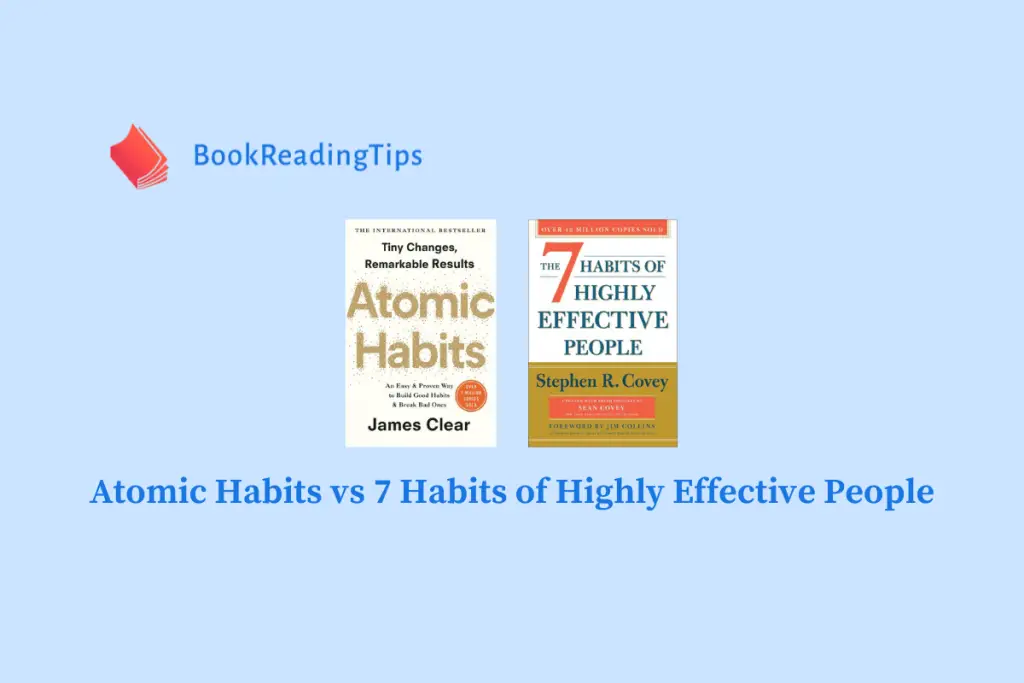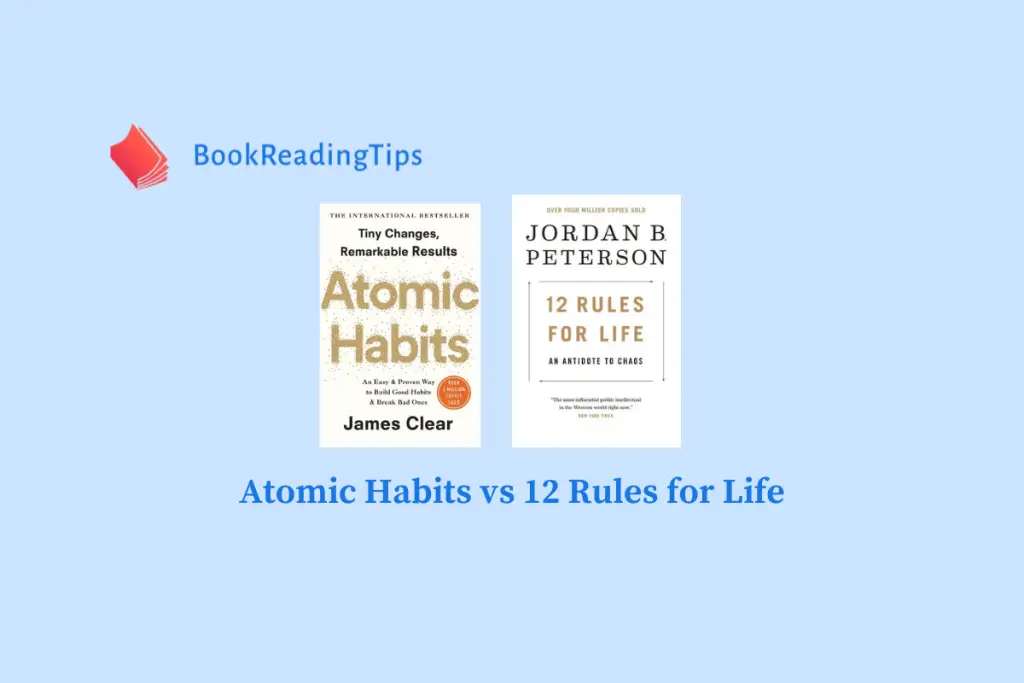Atomic Habits, penned by James Clear, and Thinking Fast And Slow, authored by Daniel Kahneman, are two groundbreaking books that have reshaped the way we perceive self-improvement and decision-making. Atomic Habits delves into the power of tiny changes and how they can lead to remarkable results in our lives. On the other hand, Thinking Fast And Slow is a deep dive into the two systems that drive the way we think: System 1, which is fast and intuitive, and System 2, which is slow and deliberate.
Atomic Habits is a practical guide for anyone looking to build good habits and break bad ones. It offers a step-by-step plan that can be applied to any area of life. On the contrary, Thinking Fast And Slow is more theoretical and psychological. It’s a must-read for those who wish to understand the complex workings of the mind and how it influences our decisions. While Atomic Habits provides the ‘how’, Thinking Fast And Slow provides the ‘why’.
In the following sections of this article, we will delve deeper into both these books. We’ll explore their key insights, how they can be applied to our lives, and how they contrast and complement each other. I feel that understanding the essence of both books can provide us with a well-rounded approach to personal development and decision-making. So, let’s embark on this enlightening journey together.
Table of Contents
- Unraveling the Power of ‘Atomic Habits’
- Diving Into ‘Thinking, Fast And Slow’
- Similarities & Differences Both the Books
- FAQs
- 1. What are the main differences between “Atomic Habits” and “Thinking Fast And Slow”?
- 2. Which book would be more beneficial for personal development?
- 3. Can the principles of “Atomic Habits” and “Thinking Fast And Slow” be combined?
- 4. Which book is easier to read and understand?
- 5. Are the concepts in “Atomic Habits” supported by the theories in “Thinking Fast And Slow”?
- 6. Which book should I read first?
- Conclusion
Unraveling the Power of ‘Atomic Habits’

i. Small Changes, Big Impact
In my opinion, one of the most compelling principles of James Clear’s ‘Atomic Habits’ is the idea that small, incremental changes can lead to significant results. The author emphasizes that it’s not about making massive leaps, but rather about the cumulative effect of hundreds of small decisions. I think this is incredibly empowering because it means anyone can start to improve their life, regardless of their current situation.
ii. The Habit Loop
Another key concept in ‘Atomic Habits’ is the Habit Loop, which consists of Cue, Craving, Response, and Reward. Clear explains that understanding this loop is crucial to forming new habits and breaking bad ones. In my view, this is an invaluable tool because it provides a framework for understanding why we do what we do and how we can change it.
iii. Identity-Based Habits
Perhaps the most profound principle in ‘Atomic Habits’ is the idea of identity-based habits. Clear argues that true behavior change is identity change. Instead of focusing on what we want to achieve, we should focus on who we wish to become. I feel that this perspective shift can be a game-changer in how we approach our goals and habits.
Diving Into ‘Thinking, Fast And Slow’

i. Two Systems of Thought
The core of Daniel Kahneman’s ‘Thinking, Fast And Slow’ is the exploration of the two systems that drive the way we think: System 1, which is fast and intuitive, and System 2, which is slow and deliberate. Kahneman suggests that understanding these two systems can help us make better decisions. I find this concept fascinating, as it provides insight into why we often act against our best interests.
ii. The Illusions of Confidence & Validity
Kahneman also delves into the illusions of confidence and validity. He explains that our confidence in our beliefs is not a measure of the quality of evidence but of the coherence of the story that the mind has managed to construct. I think this is a crucial principle to understand, as it challenges us to question our assumptions and the narratives we tell ourselves.
iii. The Anchoring Effect
Another intriguing concept in ‘Thinking, Fast And Slow’ is the anchoring effect. This refers to our tendency to rely too heavily on the first piece of information we receive (the “anchor”) when making decisions. Kahneman suggests that being aware of this bias can help us make more rational choices. In my opinion, this principle is particularly useful in a world where we are constantly bombarded with information.
Similarities & Differences Both the Books
Similarities
Both “Atomic Habits” by James Clear and “Thinking Fast And Slow” by Daniel Kahneman delve into the realm of human behavior and psychology, aiming to provide readers with insights that can transform their lives.
In “Atomic Habits,” Clear emphasizes the power of small, incremental changes in daily routines. Similarly, Kahneman in “Thinking Fast And Slow” also underscores the influence of cognitive biases on our decisions and actions. Both authors agree that understanding these underlying forces can significantly improve our decision-making processes and overall quality of life.
Moreover, I think both books are grounded in scientific research, providing readers with credible and practical advice. Clear and Kahneman use real-life examples and case studies to make their points more relatable and easy to understand.
Differences
Despite these similarities, “Atomic Habits” and “Thinking Fast And Slow” approach their subjects from different angles. Clear’s “Atomic Habits” is more of a how-to guide, offering practical strategies for habit formation and change. It’s about action and implementation. In my opinion, it’s perfect for those who are looking for actionable steps to improve their lives.
On the other hand, Kahneman’s “Thinking Fast And Slow” is more theoretical and academic. It delves into the complexities of human cognition, exploring the dual-process theory of the mind. This book is less about how to change your habits and more about understanding why we make certain decisions. I feel that it’s ideal for those interested in the intricacies of human psychology.
Moreover, the writing styles of the two books also differ. Clear’s writing is straightforward to follow, making “Atomic Habits” a quick and engaging read. Kahneman’s prose, while equally insightful, is more dense and academic, requiring a bit more time and concentration.
In conclusion, while both “Atomic Habits” and “Thinking Fast And Slow” provide valuable insights into human behavior, they do so in different ways. Depending on what you’re looking for – practical advice or deep psychological insights – one may resonate more with you than the other.
FAQs
1. What are the main differences between “Atomic Habits” and “Thinking Fast And Slow”?
“Atomic Habits” by James Clear is a self-help book that provides practical strategies for forming good habits, breaking bad ones, and mastering the tiny behaviors that lead to remarkable results. On the other hand, “Thinking Fast And Slow” by Daniel Kahneman is a psychology book that explores the two systems that drive the way we think: System 1, which is fast and intuitive, and System 2, which is slow and deliberate.
2. Which book would be more beneficial for personal development?
Both books offer valuable insights for personal development. “Atomic Habits” provides actionable advice on habit formation which can be directly applied to daily life. “Thinking Fast And Slow” provides a deeper understanding of human psychology and decision-making, which can be beneficial in personal and professional settings.
3. Can the principles of “Atomic Habits” and “Thinking Fast And Slow” be combined?
Yes, the principles of both books can be combined. The understanding of how our mind works from “Thinking Fast And Slow” can be used to better implement the habit strategies suggested in “Atomic Habits”.
4. Which book is easier to read and understand?
“Atomic Habits” is generally considered easier to read as it is written in a more conversational and engaging style. “Thinking Fast And Slow” is more academic and detailed, which might be challenging for some readers.
5. Are the concepts in “Atomic Habits” supported by the theories in “Thinking Fast And Slow”?
Yes, many of the concepts in “Atomic Habits” are supported by the theories in “Thinking Fast And Slow”. For instance, the idea of making a habit attractive to make it stick can be linked to Kahneman’s theory of System 1 being driven by instinct and emotion.
6. Which book should I read first?
It depends on your preference. If you prefer practical, actionable advice, start with “Atomic Habits”. If you are more interested in understanding the psychological theories behind decision-making and thinking, start with “Thinking Fast And Slow”.
Conclusion
Atomic Habits and Thinking Fast And Slow, both best-selling books, offer unique insights into human behavior and decision-making. Atomic Habits, by James Clear, emphasizes the power of small, consistent actions to create significant, long-lasting changes. It suggests that the key to success lies in the system, not the goal.
On the other hand, Thinking Fast And Slow by Daniel Kahneman delves into the dual process of our mind – the intuitive ‘System 1’ and analytical ‘System 2’. It demonstrates how these systems influence our decisions, often leading to cognitive biases.
While both books explore human behavior, their approach and focus differ. Atomic Habits is more about proactive change, whereas Thinking Fast And Slow is about understanding and recognizing our inherent cognitive biases.
Both books are valuable reads. Atomic Habits is ideal for those seeking to make tangible changes in their lives through habit formation. Thinking Fast And Slow is perfect for those interested in cognitive psychology and understanding the intricacies of decision-making. Together, they provide a comprehensive understanding of human behavior, decision-making, and the power of habits.




